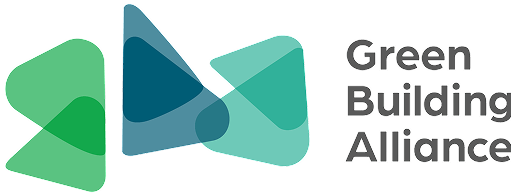Wind Power
Wind power is the conversion of wind energy into alternate forms of energy, including wind turbines for the production of electrical wind power, windmills for mechanical power, and wind pumps for water pumping or drainage. Wind turbines are by far the most significant contributor to wind power and are commonly seen in large groups known as wind farms.
What are Wind Turbines and How Do They Work?
Wind turbines are devices that convert wind energy into mechanical energy, which can then be used to produce electricity. This overall process is known as wind power. There are two different types of wind turbines: horizontal axis turbines and vertical axis turbines.
Horizontal Axis Wind Turbines
These types are those that generally come to mind and are seen in wind farms. They can be broken down into three main components: rotor, generator, and structural support. The rotor contains blades that spin to convert wind energy to rotational energy; the generator, which consists of electrical elements and converts incoming rotations to high-speed rotations, producing electricity generation; and the structural support includes the tower and base for the wind turbine as a whole.
Turbine size varies depending on location, wind speeds, and other factors, but its blades can be up to 130 feet long and its tower as high as 300 feet, totaling an overall height of 430 feet or more! Offshore wind turbines can be even greater in size.
Wind power is the cube of wind speed; therefore, doubling the wind speed will result in eight times the wind power. Because of this, it is critical for wind turbines to be properly engineered and placed in specific areas for maximum efficiency.
Vertical Axis Wind Turbines
These have a vertically-arranged rotor that does not need to be pointed into the wind to work properly. This model is commonly seen when integrated into structures such as buildings or stadiums. One major disadvantage, however, is higher costs due to lower rotational speeds. Refer to WindStax, a local Pittsburgh company, for more information on vertical wind turbines.
Offshore Wind Power
An interest in the development of offshore wind farms is growing worldwide due to higher wind speeds, less turbulent wind flows, and quieter operations.
Advantages of Onshore Wind Power
Clean Energy
Wind energy is clean and in abundant supply in many areas of the U.S. Electricity generated by wind turbines will not pollute the air, therefore less greenhouse gases are produced. According to the American Wind Energy Association (AWEA), 10 million MW of wind-generated electricity represents a reduction of 6.7 million tons of CO2 emissions, 37,500 tons of SO2, and 17,750 tons of NOx.
Improved Air Quality
The generation of wind electricity does not result in air emissions, unlike power plants. By offsetting particle pollution, wind energy can therefore improve air quality for a healthier environment.
Job Creation
Wind power brings a significant increase to the job market in the U.S. According to Statista,
Low Costs
Wind energy is currently the least expensive of all renewable energy sources—and because wind is essentially free, this energy type can provide long-term-priced power production. The introduction of wind energy can lower residential electricity costs by 50% to 90%, with anticipated pay-back ranges between six and 15 years depending on the cost of the unit and presiding electricity rates. Like other renewable energy sources, excess energy can be “sold” back to the local utility.
Free Energy Source
Wind is a limitless, renewable, and free energy source. Does it get any better than that?
Diversified Energy Portfolio
Wind energy can secure the nation’s energy supply and decrease its reliance on foreign energy, which helps reduce prices of other energy sources.
Location Options
The U.S. holds much wind power potential, so wind turbines can continue to be placed in various areas throughout the nation.
Things to Consider
Inconsistent Energy Source
Since wind is very unpredictable, it does not supply a consistent energy source. Onshore wind turbines have been found to have a capacity factor of 20%-30%. This means that a wind turbine will only produce 20%-30% of the power that it could produce if it operated at full nameplate capacity 100% of the time. For this reason, wind energy must be combined with other energy production types to supply consistent electrical power.
Noise
Wind turbines have been known to be fairly noisy when located close to populated regions; however, current technologies have reduced the amount of noise the turbines generate.
Visually Displeasing
Many people do not like the appearance of wind turbines and wind farms. Furthermore, the placement of these farms over large areas such as fields or mountains can be an issue.
Hazardous to Wildlife
Wind turbines have been perceived to be hazardous to wildlife and their habitats. Beginning in 2007, the wind industry collaborated with environmental groups, state wildlife agencies, and the federal government on the U.S. Fish and Wildlife Service’s Wind Turbine Guidelines Federal Advisory Committee. This committee is dedicated to setting guidelines that minimize wind turbines’ effect on wildlife.
New Infrastructure
The most useful wind is located in remote areas, far from population centers where the energy is needed. This means that new transmission lines must be constructed to tie these remote areas into the existing grid.
External Links
Pennsylvania Wind Working Group- Wind Energy by the Numbers
Siemens- Wind Power Solutions
Organizations
American Wind Energy Association
Global Wind Energy Council
Windustry
World Wind Energy Association
